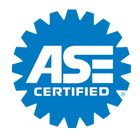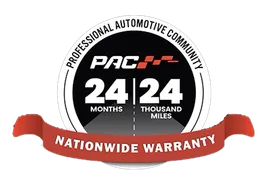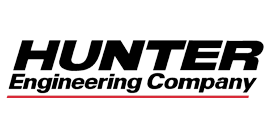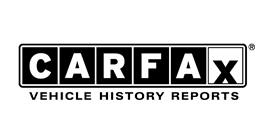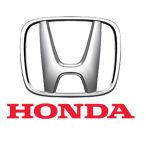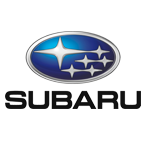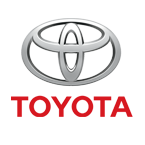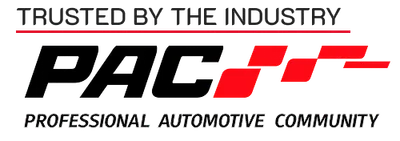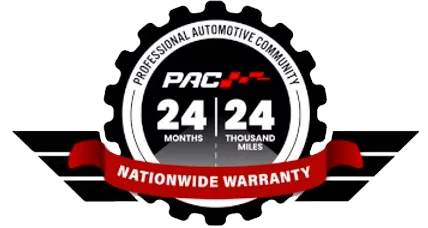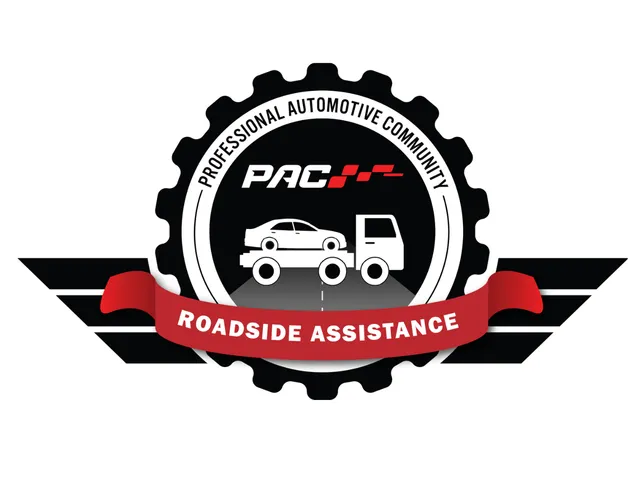978-356-8710 | 113 Central Street Ipswich, MA 01938
Tire Alignment and Tire Rotation Services
Wheel Alignment and Tire Adjustments
Ensure your tires are in optimal condition with precise alignment services at Tick's Auto Repair & Wheel Alignments. Properly aligned tires not only extend their lifespan but also enhance your vehicle's handling by preventing it from "pulling" to one side. Our certified tire specialists employ state-of-the-art equipment to meticulously inspect your tires for signs of uneven wear, cracking, or slow leaks.
If uneven tread patterns start appearing on your tires, it's likely time for a wheel alignment. This complex process involves adjusting your wheels' angles to match the specifications set by your vehicle's manufacturer.
Alignment
Wheel alignment (or simply alignment) is standard car maintenance that involves adjusting the angles of the wheels so that they are set to the manufacturer's specifications. The main purpose is to let the suspension and the steering systems operate at their desired angles - this reduces tire wear. Alignment is a complicated process and not all mechanics get it right. To have experts handle your car's alignment, visit Tick's Auto Repair & Wheel Alignments.
A wheel alignment consists of adjusting the steering and suspension components of your vehicle to maximize tread life and ensure that your vehicle tracks straight.
Proper alignment is necessary for even tread wear and precise steering. A misaligned vehicle will also affect your gas mileage.
Q. How important is wheel alignment?
A. Research indicates that the average car is driven about 12,000 miles per year. A car with toe alignment just 0.34 degrees (Just 0.17 inches) out of specification has dragged its tires sideways for more than 68 miles by the end of the year!
Q. What are the symptoms that a car is out of alignment?
A. Have your car checked if you notice:
- Excessive or uneven tire wear.
- Steering wheel pulls to the left or right.
- Feeling of looseness or wandering.
- Steering wheel vibration or shimmy.
- Steering wheel is not centered when car is moving straight ahead.
Many vehicles today are equipped with rear suspensions that can be adjusted for alignment. Our ASE certified alignment technicians can tell you if your vehicle requires a two or four wheel alignment. With our state-of-the-art computerized alignment machines we will also provide you with a computer printout showing the adjustments that were made to your vehicle.
The most common adjustable angles are: Toe This refers to the tilted direction of the wheels toward or away from one another when viewed from the front. Toe is the most critical tire-wearing angle. Tires that "toe-in" point toward one another. Tires that "toe-out" point away from each other.
Camber This refers to the tilt of the wheels toward or away from one another when viewed from the top. Wheels that tilt in toward the vehicle have "negative camber." Wheels that tilt away from the vehicle have "positive camber."
Caster This refers to the angle of the steering axis in relation to an imaginary vertical line through the center of the wheel when viewed from the side. "Positive caster" is the term used when the vertical line is tilted back toward the rear. If it's tilted forward, we call it "negative caster." The proper caster angle stabilizes your car for better steering.
Thrust Angle This refers to the relationship of all four wheels to each other, as well as their relationship to an imaginary centerline that runs from bumper to bumper. The term "thrust line" refers to the direction in which the rear wheels are pointed. Thrust angle is correctable on cars with adjustable rear suspensions. If your car has a non-adjustable suspension, thrust-angle is compensated for by aligning the front wheels to the rear wheels.
Why Four Wheel Alignment?
Reduced Tire WearImproper alignment is a major cause of premature tire wear. Over the years, a properly aligned vehicle can add thousands of miles to tire life.
Better Gas MileageGas mileage increases as rolling resistance decreases. Total alignment sets all four wheel parallel which, along with proper inflation, minimizes rolling resistance.
Improved HandlingDoes your car pull to one side? Does the steering wheel vibrate? Do you constantly have to move the steering wheel to keep your car traveling straight ahead? Many handling problems can be corrected by total alignment. With all the system components aligned properly, road shock is more efficiently absorbed for a smoother ride.
Front End InspectionA suspension system inspection is part of our alignment procedure. This allows us to spot worn parts before they cause costly problems. Wheel alignments should be checked at least once per year or anytime you have your tires replaced.
Steering & Suspension
Shock absorbers and struts are designed to keep the wheels in contact with the road, improving cornering and braking. Though original equipment shocks have improved in recent years, many are ready for replacement in as few as 30,000 miles.
The lifespan of a strut is about double that of a shock. Most people do not notice the gradual deterioration in ride quality and many shocks and struts are not replaced as often as they should be. Shocks and struts should be checked every 12,000 miles or when any of these symptoms are noticed:
- Bouncy or uncomfortable ride
- excessive body sway when cornering
- fluid leaks from the shock or strut
- physical damage to the shock or strut
- nose dive when braking
- uneven tire wear
- tail squat when accelerating
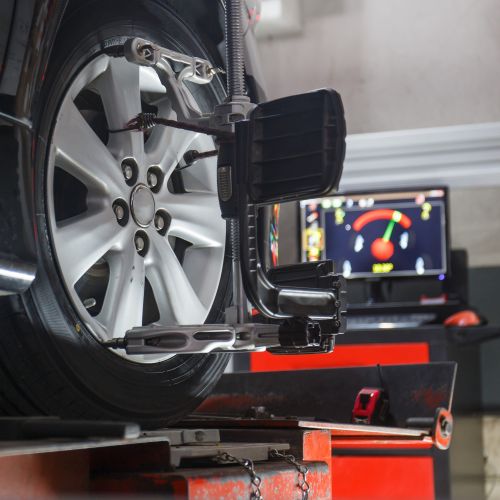
Benefits of a Professional Wheel Alignment
Regular wheel alignments offer a range of benefits that keep your vehicle in optimal condition:
- Improved Safety: Proper alignment enhances handling, reducing the risk of accidents.
- Increased Tire Life: Evenly aligned wheels prevent premature tire wear, saving you money in the long run.
- Better Fuel Efficiency: Misaligned wheels can increase rolling resistance, causing higher fuel consumption.
- Smoother Driving Experience: Alignment issues can cause vibrations or pulling; fixing them restores comfort on the road.
Alignment FAQs
How long does a full alignment take?
A wheel alignment usually takes about an hour for both two-wheel and four-wheel drive vehicles. However, if there is significant wear and tear on suspension components like bushings, track rods, or the alignment system itself, replacement parts may be needed, which could extend the service time.
What happens if you wait too long for an alignment?
Delaying a wheel alignment can negatively affect your tire performance and lifespan. Even slight misalignments, which are imperceptible to the eye but measurable in small degrees or fractions of an inch, can cause uneven and premature tire wear. Over time, this wear becomes more noticeable, impacting safety and fuel efficiency. To prevent these issues, it's recommended to have your alignment checked every 6,000 miles.
What is checked during an alignment?
During a tire alignment, three key angles are examined: camber, toe, and caster. Camber refers to the angle between the vertical axis of the tire and a line perpendicular to the road surface when viewed from the front. If the top of the tire tilts inward, creating an "X" shape between the wheels, it's known as negative camber, which can cause excessive wear on the inner edge of the tire due to increased friction.
Do I need an alignment after replacing tires?
Yes, you do! Proper wheel alignment ensures that the angles between your tires and the road surface are accurate, which helps to maximize tire life, improve handling, and ensure even tread wear. This not only boosts fuel efficiency and driving safety but also enhances your overall driving experience.
Don't let uneven tire wear diminish the longevity of your tires. Experience a fast and cost-effective tire alignment at our shop in Ipswich. Call us today at 978-356-8710 to schedule an appointment.
To learn more about our Alignment services, call us at 978-356-8710 or request a quote by clicking below:
Request Quote
Discover More About Alignment Repair Services At Tick's Auto Repair & Wheel Alignments in Ipswich
4X4 Services
Brake Repair
Tire Repair Services
coupons
FREE Safety Inspection!
view couponHas your car been sitting for a while as you work from home? Bring it in for a FREE road ready test to make sure that it's safe for travel.
Testimonials
Dave Rocco, 11/28/2024
Did an alignment recently. Very knowledgeable and courteous. Now my go-to shop for all future repairs.

